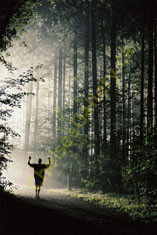Exposed! :: Picture Perfect - The Perfect Print ::© Copyright 2007. All Rights Reserved. Contents
Neale was frustrated and uncertain - home based ink-jet, Giclée, photo process, LightJet? - there are so many printing technologies available my past photo sudent asked me for advice. "That's a tough decision," I sympathized. And it is! You invest time and money capturing the perfect photo in your film or digital camera only to be dazzled by choices and doubts. What should you do? Start by reading this edition of Exposed! to help make the print decisions easier! There have never been more options for printing -
Traditional Photo PrintingTraditional photo processing has the longest track record because it has been around, in one form or another, for over a century. With proper equipment, materials and experience these prints can last a lifetime. Some fine art photo collectors are still picky and will only accept "true" photographs in their collections. A well-printed photo can be exceptional and last a many, many years. Home-Based PrintingHome-based printing is probably the least understood category of the print processes. These printers are readily available and inexpensive (manufacturers make their profits on the ink and the paper not the machine itself). However, results from these printers can be disappointing, not because of the equipment but because of the human running the printer. Printer manufacturers can sell you the equipment and materials but they cannot easily sell you the all-important expertise (profiling, colour space knowledge) to produce an award winning print! Also beware of some ink - a dye based ink will not have the archival staying power of a pigment based ink. A dye based ink can lead to fast fading prints. Lightjet PrintsLightjet printers were developed for the mapping industry originally and then introduced to the photo world. They can print huge sizes (ie maps) using laser technology on true photographic paper. There are no toners or inks - just light and the light sensitive paper. Ottawa's Proulx Brothers offer this technology.
Giclée (Professional Inkjet) PrintsProfessionally produced inkjet or Giclée prints are available at service providers like Artopix, HeadshotsRentals or Proulx Brothers. This technology has been gaining acceptance in the fine art and collector's worlds - Photo District News' September issue features Fine Art Photography - a good read! Gilclée prints can be printed on a wide range of ‘papers' including traditional looking photo paper, water colour paper and even canvas. Pigment inks ensure archiveability. Read independent research for permanence and archive tests for these different technologies. Print CostHow do you determine how much to pay for a print? For an important print the price may be inconsequential, for a "disposable" photo for the fridge door, cost will be a big factor! Check the service provider's cost structure. There may be a price to properly set the profile for your individual photo file and then a per print fee. If you plan on making many prints of one piece of film (or digital file) this cost structure could provide consistent prints and save you money! HomeworkTake a negative, slide or digital file and send it to 5 differnt labs to have printed using the different technologies discussed above. Tell the lab specifically what you are looking for (warm hues, exceptional shadow detail...). Speak to the printer if you wish to develop a long term printing relationship. Compare the results and the price. Which print is nicest for you? How did the printing enhance or diminish the subject? Pro PerspectiveIn my mind, more important than the printing technology you choose is the experience of the human printing your photo. Experience and knowledge of International Colour Consortium (ICC) profiles, media and interaction of all elements of the printing process is far more important than most of the technology used. The art of printing a beautiful photo is as challenging as the art of capturing the photo. And I am a photographer, not a printer! At ChelseaGallery.ca I outsource the printing of my photos to ensure that customers receive a photo printed to the same high quality I expect from my own shooting! Producing the fine-art available on the site takes two skilled people - the photographer, Harry Nowell, and a qualified printer I trust! Final FrameMy best advice on printing is to find a good printer and develop a working relationship with them. With time, they will learn your preferences and you will learn to trust their printing skills! Take (and print) photos. Have fun! |
Samples |

